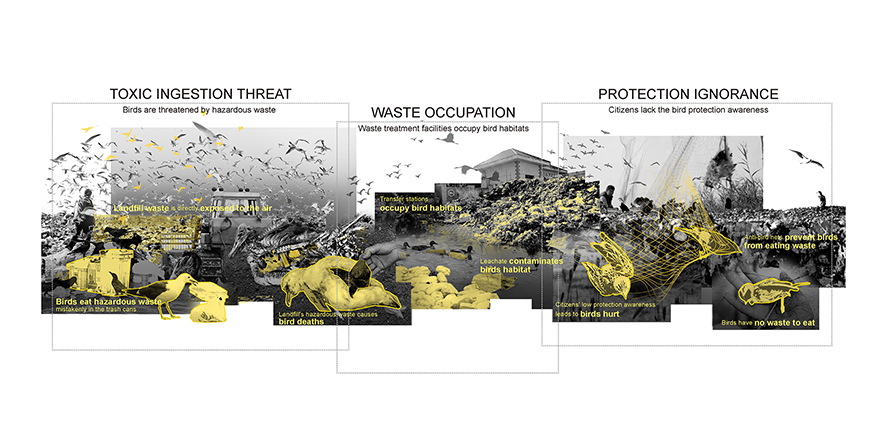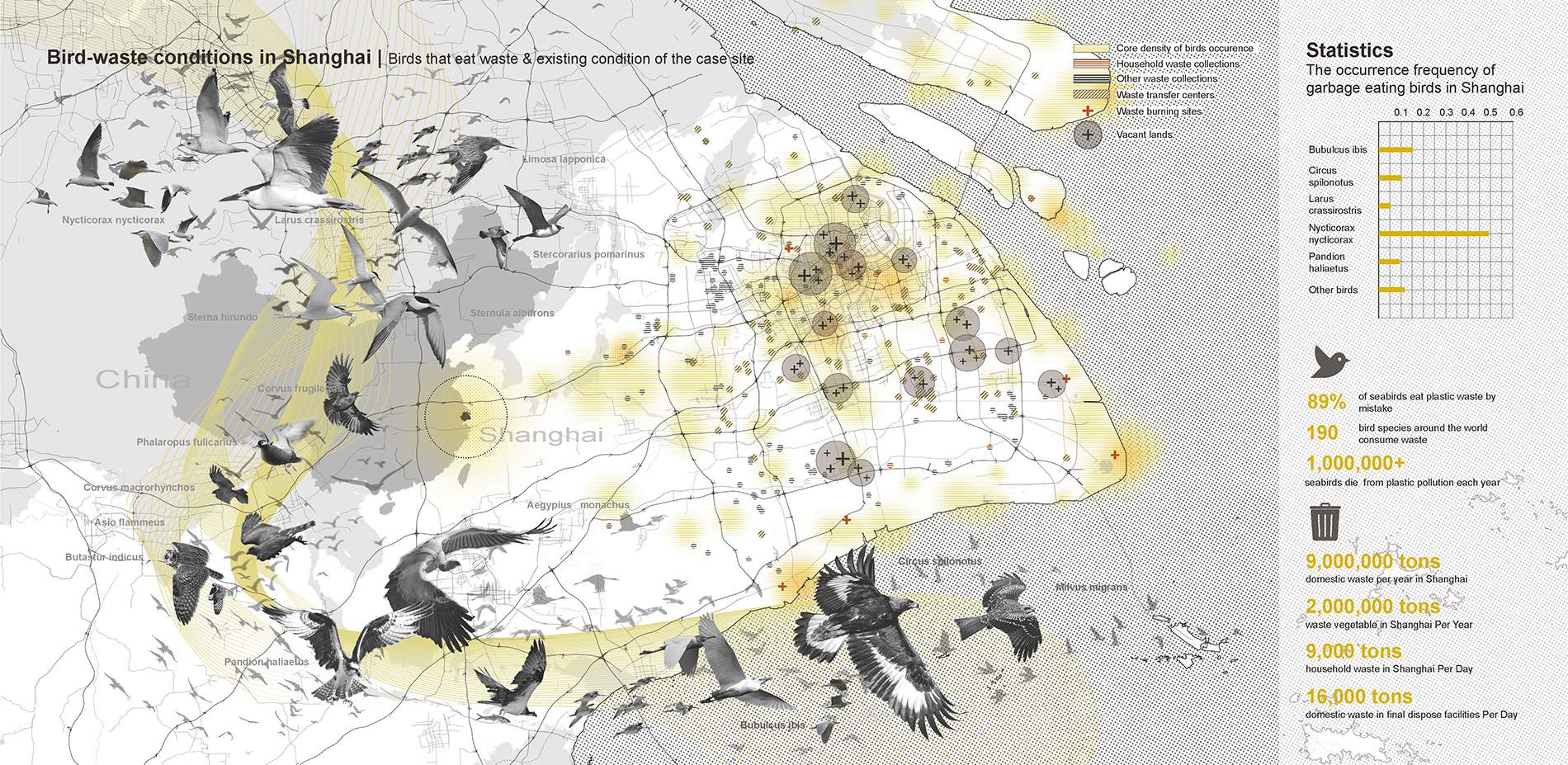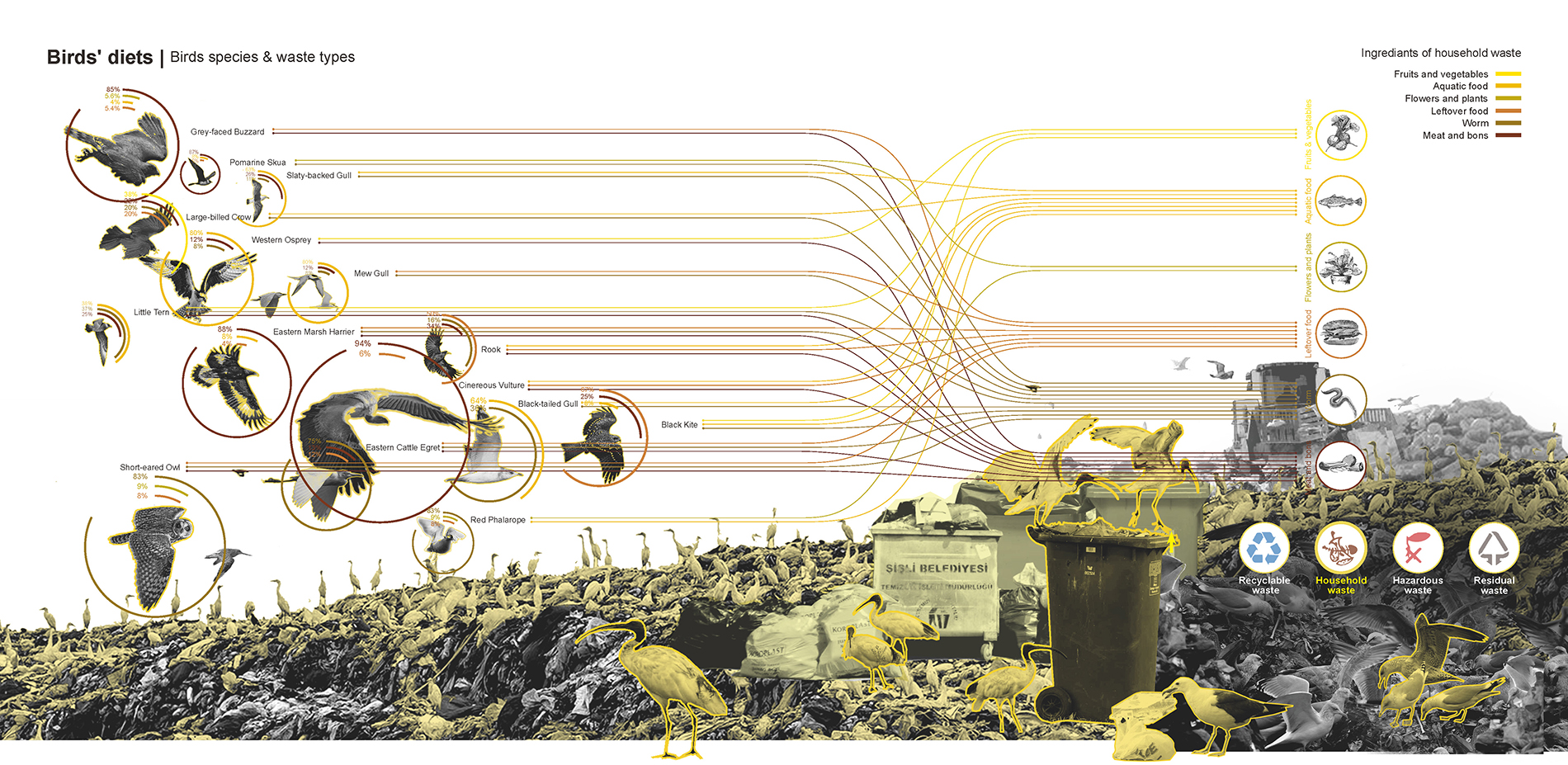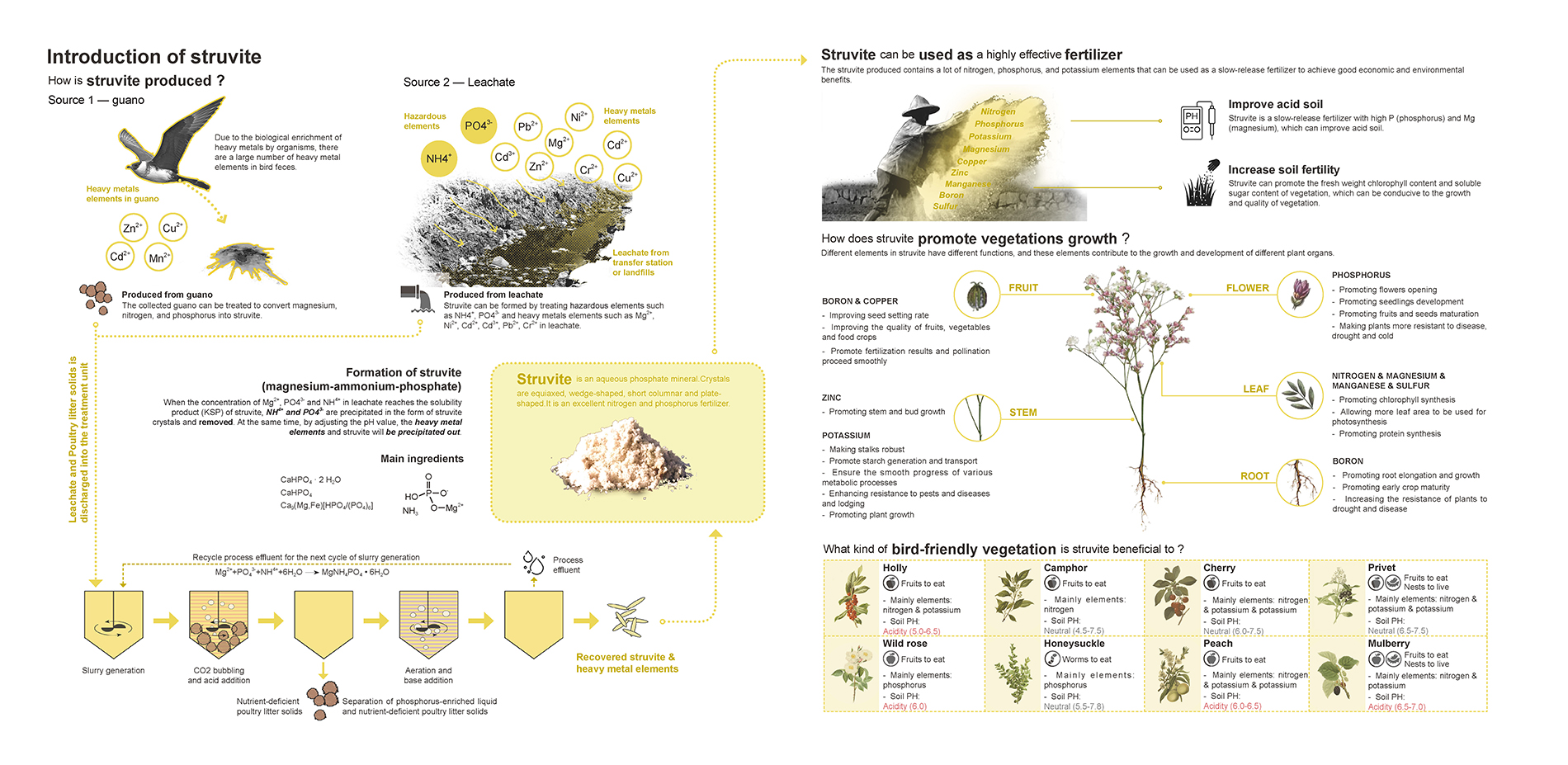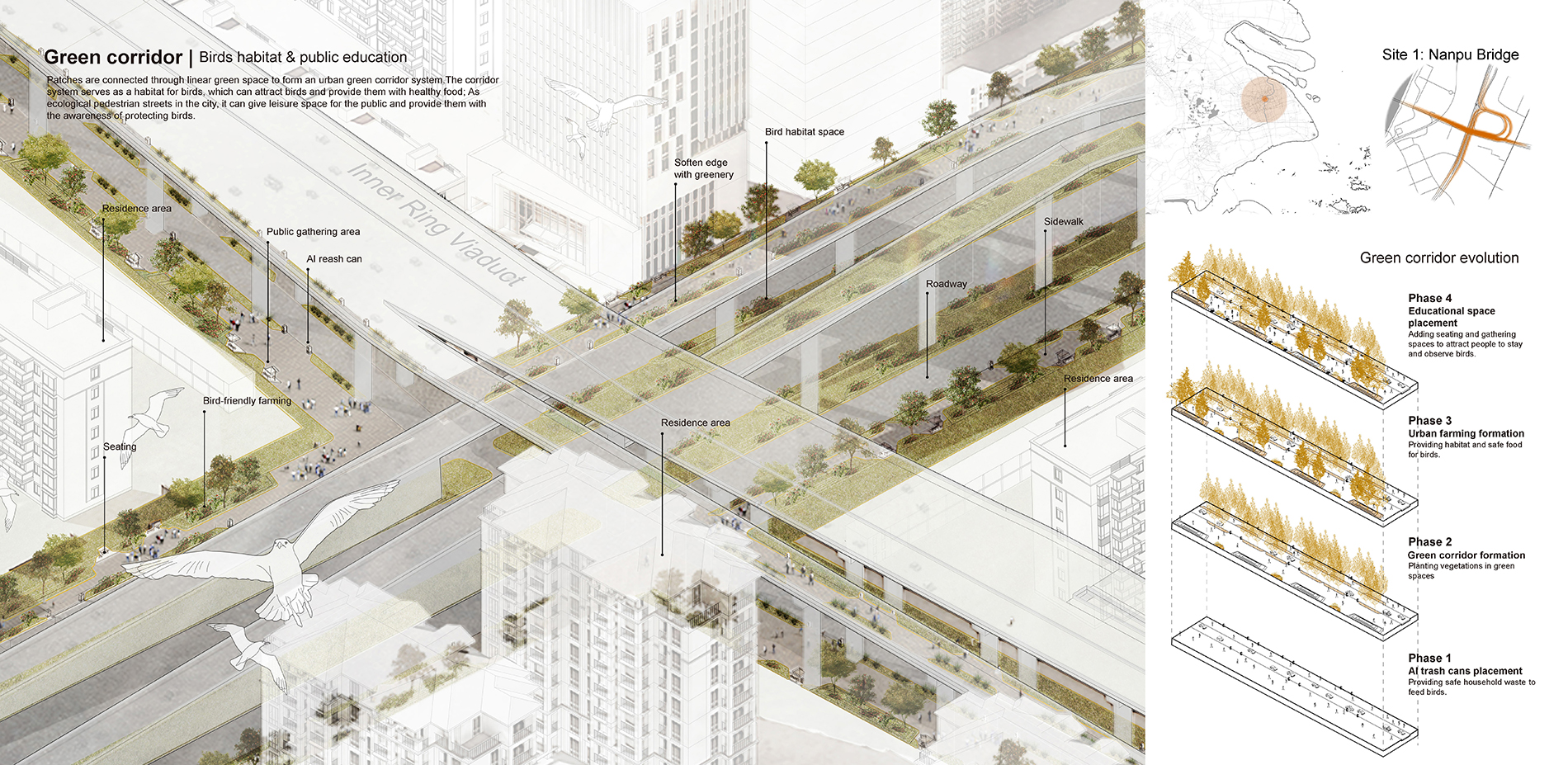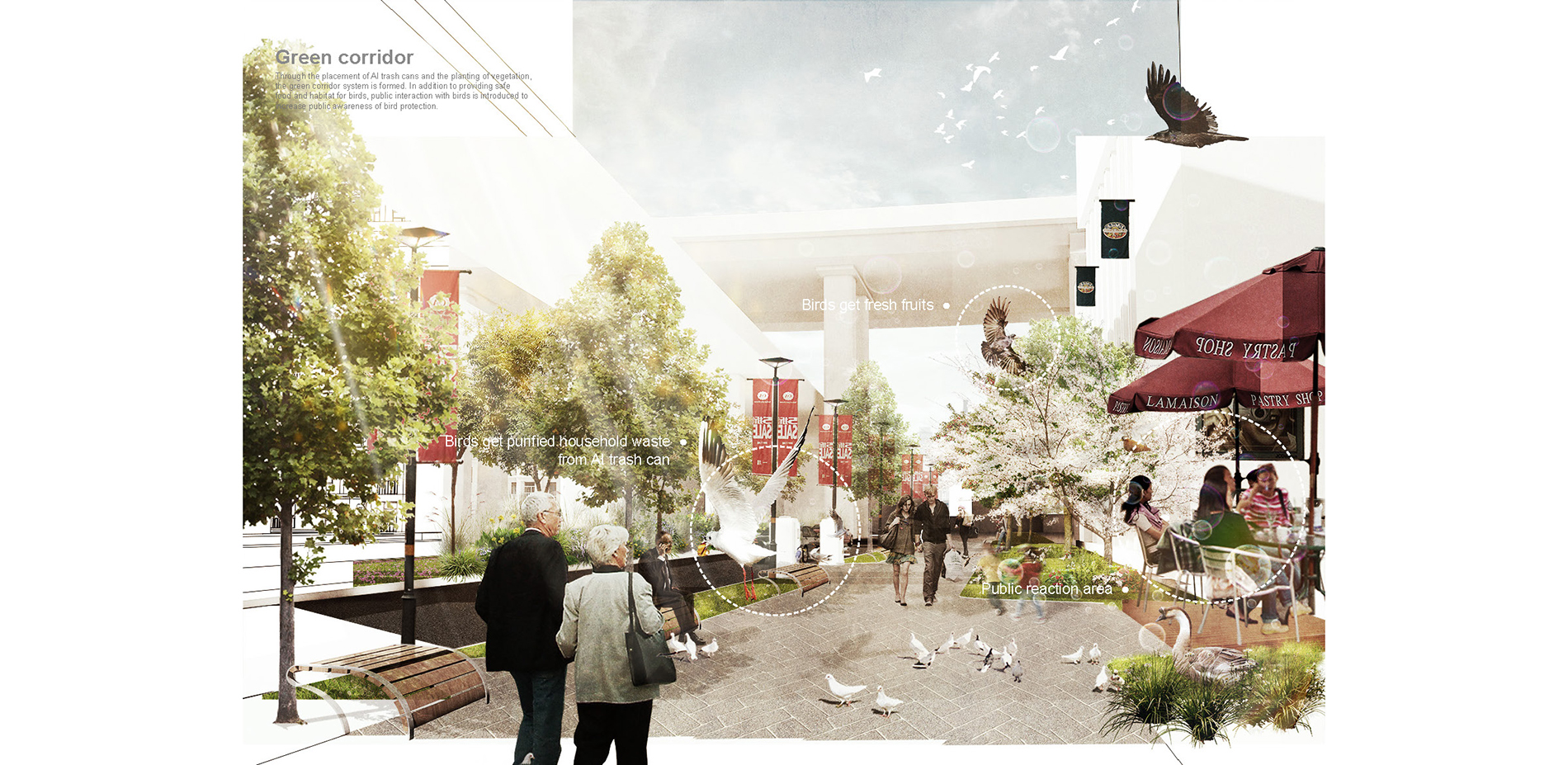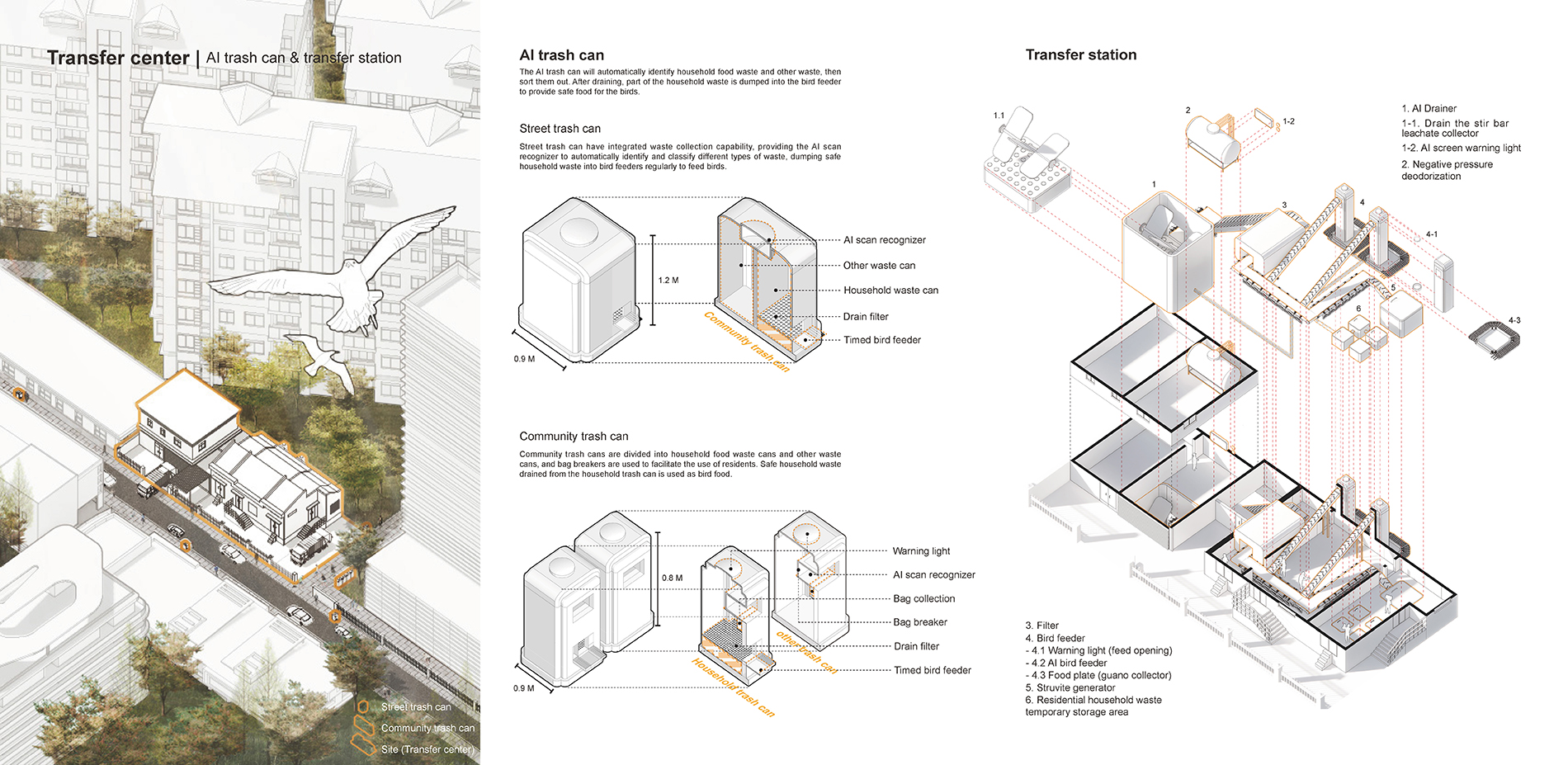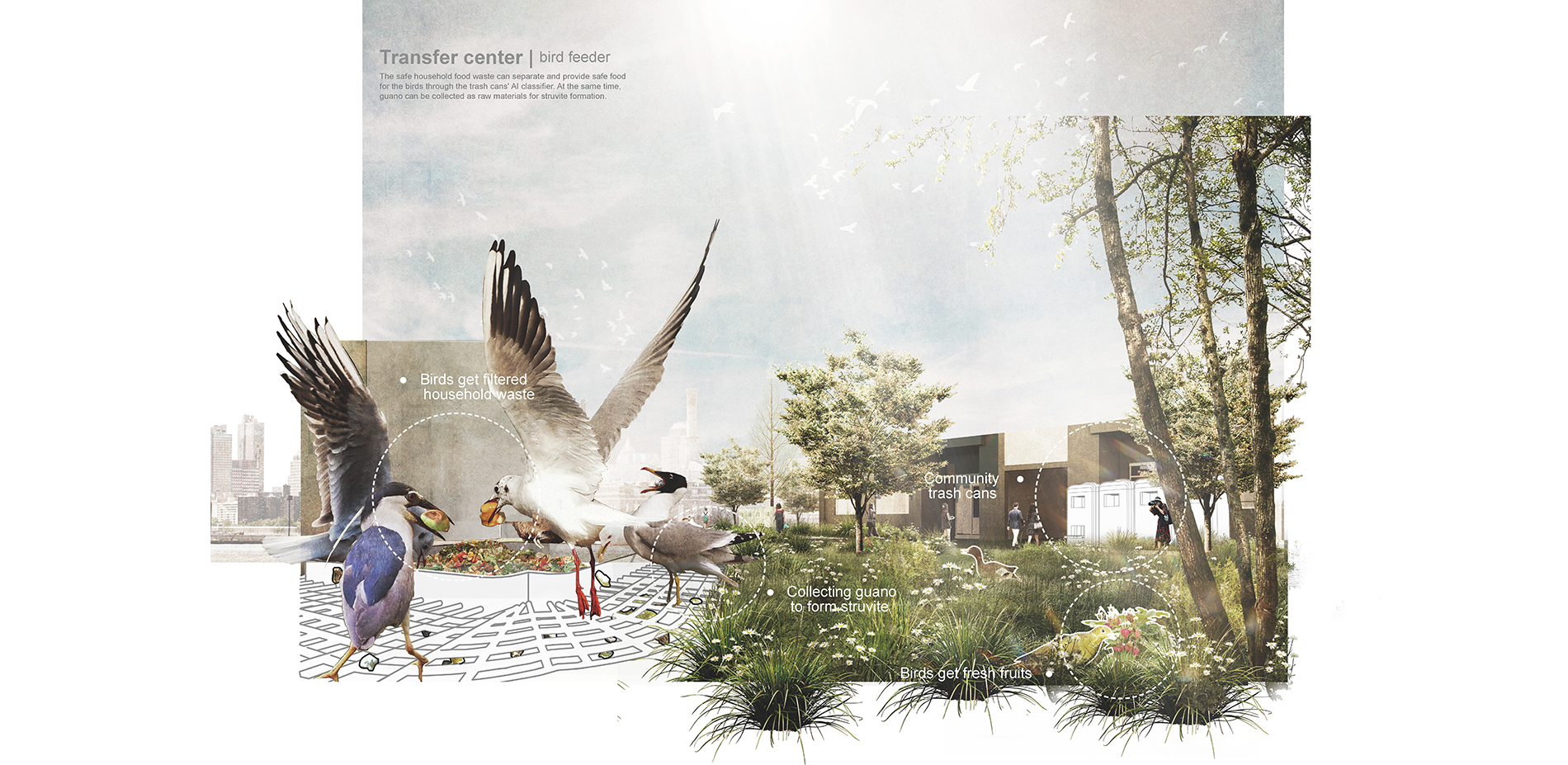Humans and Birds in a Cycle — A Sustainable Waste Stream and Habitat Network Planning for Aves in Shanghai
Honor Award
Student Collaboration
Shanghai, China
Shuyu Hou; Linfeng Huang; Ruiyang Li, Student International ASLA; Xiaofeng Zhang
Faculty Advisors: Yufei Ding; Zhicong Zhao; Rui Yang
Tsinghua University
The University of Adelaide
Shandong Jianzhu University
The results of this interesting collaboration between students from multiple fields demonstrates sustainable thinking. There’s a ton of great research here, but the landscape, environmental, and ecological conservation elements come through. It’s wonderful that, through the images presented, the viewer gets to see how humans will also benefit from this solution to waste management and its impact on birds’ health.
- 2021 Awards Jury
Project Credits
Yuxin WANG
Technical support in waste stream planning and design
Project Statement
Human food waste is important anthropogenic food subsidies used by different animal species, especially birds. But the unmanaged litter increases the risk of toxic ingestion and occasionally cause conflicts between human and birds.
Shanghai, with 9,000t wet garbage (mainly food waste) every day and thousands of birds spotted around, is a perfect site for seeking solutions for this phenomena. It is currently under reforming of garbage classification and disposal system and has great potential to build a sustainable network oriented by protection needs.
According to birds’ occurrence data and garbage treatment points, we analyze the spatial relationship and plan two systems: garbage disposal system and birds’ habitat system. These provides birds edible waste at selected places and times, collect the droppings to compost to provide fertilizers for organic farming, plant edible food for both human and birds, and provide habitat patches and corridors for birds and as nature experience sites for human. The two systems join together through stuvite that generated both in process of garbage disposal and birds’ metabolism, forming a sustainable cycle.
Project Narrative
1. Background
Human settlements have changed the lives of animals in many aspects, while the habitats become fragmented and the suitable food is harder to find, anthropogenic garbage provide an optional food source. Organic waste is one of the most important anthropogenic food subsidies used by different species, especially for birds. Researches show that at least 298 bird species are with evidence of interaction with anthropogenic litter around the world, among them 190 species have evidence of eating it.
As an informal supplementary feeding, the anthropogenic litter provides abundant and permanent food for the birds and has some positive effects on species abundance. But this unmanaged litter also increase the risk of toxic ingestion for those eating it and occasionally cause conflicts between human and birds in some degree. The current waste stream in cities usually cut off the contact between birds and litter. This is a labor-saving solution for human, but it can be better by being sustainable and avian-friendly.
Shanghai is trying to build a multilayer cycle system within its garbage steam by classifying and recycling the waste. Landscape can help the cycle be in a more ecological manner by making the most of the garbage within the city.
2. Site information
Shanghai locates in east coast of China and is under reforming of garbage classification and dispose system in recent years. It has 9,000t wet garbage (organic waste) to be disposed every day and thousands of birds spotted in the city which may take these waste as food. These provide abundant possibilities for this exploring plan to reform the garbage disposal system into an avian-friendly one while contributing to human society through landscape planning and design. Shanghai has lots of scattered green spaces across the city and some green corridors while there is still potential to improve this system in terms of coverage and connectivity.
3. Key strategies
Our focus is how to make this city achieve sustainability between biodiversity and human life with landscape approaches.
We try to figure out a possible way to give birds a chance to eat safe and healthy garbage, while contributing to human society in this process to make a sustainable cycle through landscape planning and design.
Allowing the birds to have access to the safe types of waste is the first and key step. We propose an avian-friendly garbage disposal system from which process human and birds can both get benefits. The 4 main strategies are (1) Through classification and pretreatment, give birds access to safe edible garbage, (2) Reduce the impact on human activities through the behavioral pattern training of regular feeding, (3) Collect bird dung to compost and the struvite crystallized from landfill leachate and wastewater treatment and turn them into ecological fertilizer, and (4) Creating habitat system with green patches, organic farms and green corridors and offering citizens a place for nature education.
4. Spatial analysis
For garbage system and potential ingestion points, we use bird occurrence data and garbage treatment points. After literature digging and data searching, we selected 19 species among 420 bird species that are spotted in Shanghai according to 2 screening criteria: (1) with evidence of eating litter in literature, (2) possible to eat from garbage or landfill. Under these restrictions, we got 2878 points of space records of bird occurrence from the e-bird dataset and analyzed the core density of the distribution through GIS modeling. We superimpose this result with the 280 waste treatment points of different levels across Shanghai and obtain a series of hotspots for research.
For habitat system framing, we use over 100,000 occurrence point data of all 420 bird species and analyze the density through GIS modeling. Combining with the land cover data, we pick sites that are most suitable for reforming habitat for birds, mainly places not in use currently, and locate suitable corridors between hotspots of habitats.
5. System planning and landscape design
(1) garbage disposal system
There are three treatment procedures in the waste stream, the garbage collections of the communities, the transfer centers, and the terminal landfills. Among the hotspots that identified in the analyze process, we select a typical nodes in each treatment procedure to implement the planning strategies: (1) For the trash collections of the communities, use the Artificial Intelligence classification system to classify the edible trash and feed the birds after draining at regular intervals; (2) For the transfer centers, after screening and draining, the edible waste is separated and used to feed the birds regularly in given points; (3) For the terminal landfills, we sort and process the remaining edible organic waste, feed the fresh part to the birds, and landfill the remained. During the process of disposal, the leachate will be purified through A-A-O-BFA technology and generate struvite and sludge as fertilizers. These fertilizers can be used near the landfill to grow food for birds, and transferred outside the landfill for farming, thus forming a virtuous ecological cycle.
(2) birds’ habitat system
Based on the data analysis of the current bird spots in the city, we search for 3 types of place to be target areas for habitat improvement: (1) hot spots with high bird diversity and abundance; (2) free land near hot spots with high bird abundance; and (3) potential corridors that connect the hot spots. Use the fertilizer produced in the garbage disposal process to plant appropriate types of trees, crops and fruits in the target areas to provide habitat and food for birds, and form a well-connected network, thus forming a cycle of garbage and bird food. In these habitats, we also provide space for natural experiences and ecological educational activities for citizens, enhance people's awareness of ecological protection by learning related knowledge and birds-watching, and contribute to a resilient and sustainable city.
Plant List:
- Morus alba L
- Cerasus pseudocerasus (Lindl.) G. Don
- Ziziphus jujuba Mill. var. spinosa (Bunge) Hu ex H.F.Chow.
- Cinnamomum camphora (L.) Presl.
- Amygdalus persica L.
- Ligustrum lucidum Ait
- Taxodium 'zhongshanshan'
- Platanus hispanica
- Koelreuteria paniculata Laxm.
- Ilex chinensis Sims
- Rosa multiflora
- Murraya exotica L.
- Lonicera japonica Thunb
- Lolium perenne L.
- Scutellaria barbata D. Don
- Cynodondactylon(Linn.)Pers.
- Agrostis nebulosa
- Bellis perennis Linn.
- Fragaria ananassa
- Miscanthus sinensis cv.
- Liriope spicata (Thunb.) Lour.
- Oxalis corymbosa DC.
